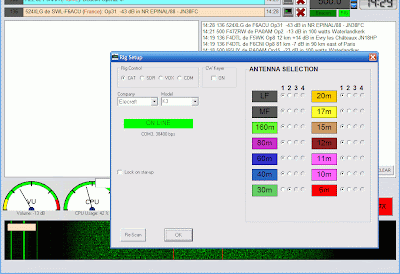 Operatic debut
Operatic debut
Nothing to do with Verdi or Rossini, nor the web browser of the same name. OPERA is a new weak signal digital mode that has been developed for use on the amateur LF (500kHz) and VLF (136kHz) bands.
Information about it seems to be a bit hard to come by, but there is an OPERA Yahoo group from where I presume you can download the latest version of the software. I managed to find a copy and was surprised at the sophistication of the program. It already has working CAT support for many transceivers including my Elecraft K2 and K3. It also has a built-in chat system showing reported signals from other users.
Although the new mode is apparently the invention of Graham, G0NBD, the program has been written by Jose Alberto Ros, EA5HVK, author of the ROS digital mode, and there are clear similarities in the user interface. The program supports all amateur bands from VLF to 6m but currently you can only select the frequencies 136kHz and 500kHz.
There are actually two OPERA modes, one of which is claimed to be even better (i.e. work with even weaker signals) than the WSPR mode. What is particularly interesting about OPERA though is that it does not need to use a sound card to send a transmission. Although the sound card is an option – and a convenient one for users already set up for data modes – OPERA actually (if I understand correctly) uses on/off keying, in other words CW (though not Morse code.) This offers the potential for long distance contacts to be made using ultra-simple QRPP (very low power) transmitters designed for QRP CW use – though I imagine that success depends on use of a very narrow bandwidth so you might need to pay more attention to transmitter stability than you would need for Morse code.) If the digital encoding scheme is published then it would also be simple to build microcontroller based beacon transmitters.
As I am not equipped to operate on the 500kHz or 136kHz bands I have been unable to try OPERA out on the air myself. But it certainly looks an interesting mode, especially if it is opened up to allow use on the HF bands where it could be used as an alternative to WSPR and QRSS CW modes.













